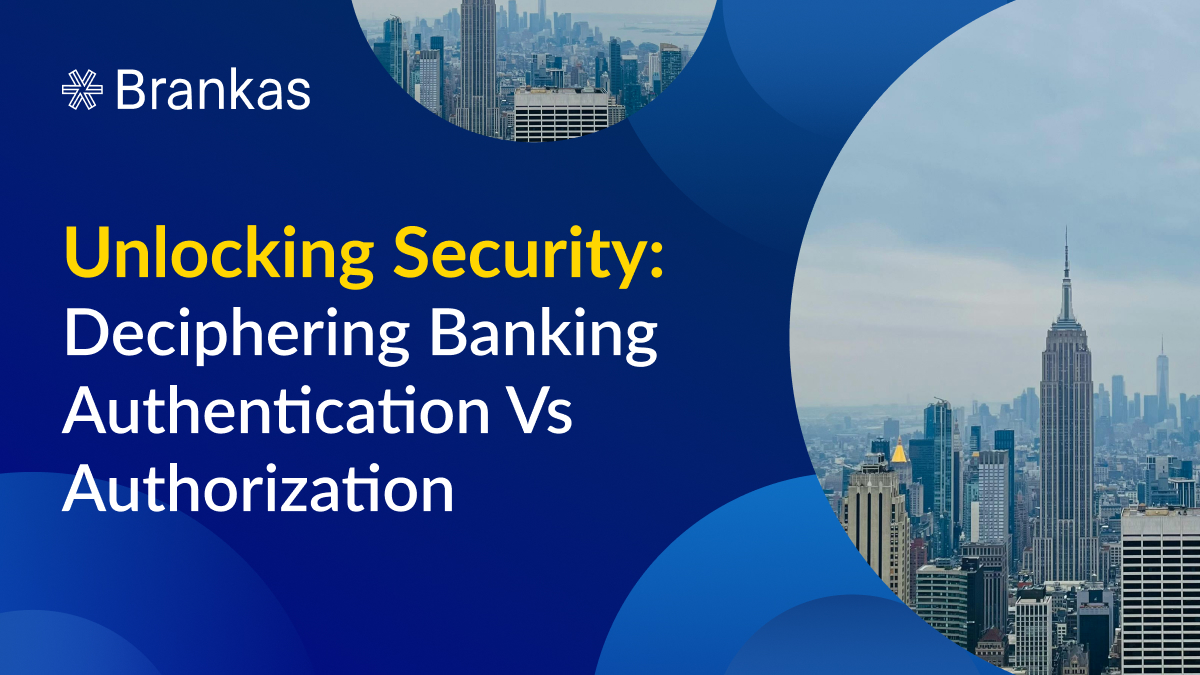Typing in passwords, inputting OTPs, or using biometrics to log in or use your bank account to pay for online transactions have become part of most people’s routines in the last few years. People know these as security measures. However, they do not all serve the same purpose.
When are you authenticating and when are you authorizing? Are both necessary to mitigate security risks?
Both of these processes are important building blocks in banking security. In this blog, we’ll discuss the differences between authentication versus authorization.
Authentication Vs. Authorization: Are They Different?
Authentication and authorization are cornerstones of digital finance security, often working in tandem but serving fundamentally different purposes.
Simply put, authentication is about who you are, while authorization is about what you can do. Think of it like this: authentication is like showing your ID to get into a building, while authorization is like getting the key to a specific room within that building.
Authentication is the process of verifying who someone is. It’s akin to presenting an ID card at a security checkpoint. The goal is to confirm that the person attempting to gain access, which may be an area in an office or a social media account, is who they claim to be.
Authentication answers the question: Are you who you say you are?
Authorization, on the other hand, determines what someone is allowed to do. Once a person’s identity has been confirmed, authorization checks their permissions or privileges. This process ensures that even if someone gains access, they can only perform actions or access data within their allowed scope.
Authorization answers the question: What are you allowed to do?
While distinct, these processes are complementary, forming a layered approach to security, making open banking safe. Authentication ensures that unauthorized individuals cannot access a system, while authorization limits the actions of authenticated users based on their roles or privileges.
Authentication Versus Authorization in Banking
Authentication and authorization are critical in banking, where sensitive financial data and transactions must be rigorously protected. Banks implement stringent security protocols to ensure users’ accounts remain secure and accessible only to authorized individuals.
Authentication and authorization procedures are typically used when users access their accounts and/or connect their bank accounts to a third-party app or service, such as for e-commerce payments.
Banks use authentication technology to ensure that only legitimate users can access their accounts. This involves the use of a unique username and password, multi-factor authentication, as well as biometric authentication.
This process confirms that the entity trying to access the account is the rightful owner. So even if fraudulent actors possess partial information (such as a password), they still cannot log in to the account.
Authorization governs what the user can do within a system. For example, a logged-in user can view their account balances, transfer funds, or pay bills. However, certain accounts may have transfer limits or may require additional verification to apply for loans.
Banks implement authorization procedures to prevent unauthorized activity and ensure that customers maintain control over their finances. This helps mitigate unauthorized activity, fraud detection, as well as prevent money laundering.
By focusing on robust authentication and clear, user-centric authorization rules, financial institutions deliver secure yet smooth payment solutions for customers, safeguarding their financial data and transactions.
Technology like open finance solutions is revolutionizing authentication by enabling secure and streamlined access across multiple financial platforms. Open finance protocols often integrate with third-party systems to verify user identities rather than relying solely on traditional methods like passwords or two-factor authentication (2FA).

Authentication and Authorization Methods
The methods used for authentication and authorization have evolved significantly with technological advancements. Understanding these methods helps clarify how organizations secure their systems.
Authentication Methods
Here are the methods typically used to authenticate accounts and users:
Passwords: Traditionally the most prevalent method, passwords use secret combinations of characters that users must input to access their account.
Biometrics: Leveraging unique physiological or behavioral traits for identification, such as fingerprints, facial recognition, voice patterns, or even typing rhythms.
Multi-Factor Authentication (MFA): Enhancing security by requiring the presentation of two or more independent credentials. This typically involves combining something the user knows (password), something the user has (e.g., a security token or a code delivered to a mobile device), and something the user is (biometric trait).
Knowledge-Based Authentication (KBA): Relying on user-specific information, such as personal security questions (e.g., “What is your mother’s maiden name?").
Public Key Infrastructure (PKI): Utilizing digital certificates to verify the authenticity of entities involved in a communication or transaction.
Authorization Methods
Here are methods used for authorizing changes and transactions within a system or for an account:
Role-Based Access Control (RBAC): Assigning users to specific roles within an organization (e.g., administrator, customer, manager) and granting access privileges based on these role definitions.
Attribute-Based Access Control (ABAC): Assigning access permissions based on various user attributes, such as department, location, clearance level, or even time of day.
Access Control Lists (ACLs): Explicitly defining which users have permission to access specific resources, such as files, directories, or databases.
Least Privilege Principle: Granting users only the minimum level of access necessary to perform their job functions. This principle helps to minimize the potential impact of a security breach by limiting the scope of damage that a compromised account could cause.
Various systems and platforms implement a combination of authentication and authorization methods to maintain security. By implementing appropriate methods for both authentication and authorization, organizations can achieve a balance between security and usability.
Authentication and Authorization in Practical Scenarios
To make it easier to understand the distinction between authentication and authorization, here are two real-world scenarios:
Online Banking:
• Authentication: When a user attempts to access their online banking account, they must first authenticate their identity by entering credentials such as a username and password or by utilizing biometric authentication.
• Authorization: Upon successful authentication, the system determines the scope of actions the user is authorized to perform. These actions may include viewing account balances, transferring funds, paying bills, or approving loans. However, access to certain critical functions, such as loan approvals or account modifications, may require additional authorization levels or manual verification by bank personnel.
Corporate Networks:
• Authentication: Employees typically authenticate their identity using credentials such as usernames and passwords, or through smart cards or biometric authentication to access equipment (e.g., computers).
• Authorization: Once authenticated, employees are granted access to specific network resources based on their job roles and responsibilities. For example, a marketing manager may be authorized to access marketing databases and software, while an IT administrator may have access to network configuration tools and sensitive system files.

Offer Security and Convenience with Brankas
Authentication and authorization are essential processes that safeguard digital interactions. While authentication confirms a user’s identity, authorization defines what they can access or do within a system. Together, they form a powerful duo that protects sensitive information and ensures smooth, secure experiences for users.
Understanding the difference between banking authentication and authorization empowers businesses and individuals to make informed decisions about digital security. Through disbursement solutions with robust authentication and authorization methods, organizations can mitigate risks, enhance trust, and stay ahead in an increasingly digital world.
Navigate the digital landscape confidently and securely with Brankas’ innovative banking solutions. Contact us today to learn more.
